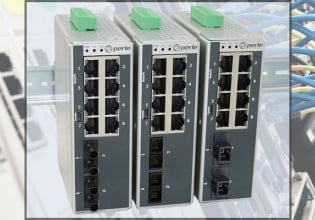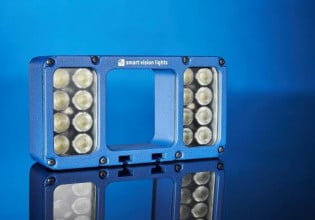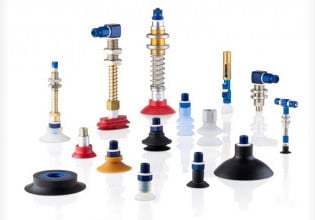Leveraging IIoT and Energy Measurement Tools for Machine Optimization
Analytics from data algorithms can predict machine failures and provide diagnostics—but what should we measure? Then, once the information has been collected, what trends might point to problems?
Energy measurement is the process of monitoring the electrical consumption of a system or device under various load conditions. Most importantly, a system measures voltage, current, and power present in the attached system over time. The data collected can be used for various purposes, the most important being to detect any anomalies.
Using IIoT in this context refers to implementing smart sensors, cloud functionality, and software analytics to detect issues with energy consumption before it occurs in the system. IIoT enables an organization to gather data from various sources, keeping an active historical trend or record. This data can then be used to monitor energy consumption variations by the attached system and connect failures with the correct relevant sub-system.
Monitoring allows for discovering additional cost savings and operational excellence opportunities, which is impossible in traditional, decentralized energy morning programs. Additionally, IIoT can be used to implement predictive maintenance rather than relying on reactive or 'breakdown event' maintenance.

Figure 1. Voltage measurement is key to understanding the running status of a machine now, as well as ongoing health in the future. Image used courtesy of Canva
What Does Energy Measurement Include?
At the very basic level, energy measurement involves monitoring three fundamental electrical properties: voltage, current, and power. These parameters can generate historical trends and gain insight into the internal system's performance, but each one can point to different types of issues.
Let's discuss how these parameters contribute to energy measurements.
Voltage
Voltage is an indicator of the system's overall health, and any problem in voltage has a major impact on the attached system or equipment. Since every electrical or electronic component cannot run without voltage, we can monitor individual electrical or electronic components to detect a problem with the incoming upstream voltage.
For example, faults in the incoming voltage supply, such as low voltage, can damage the motors. It causes the motor to consume more current (more significant than the rated ‘full load’ quantity), heating internal windings and causing permanent damage to the motor.
IIoT technology, in this scenario, can monitor the voltage for any abnormal drop below a specific value (depending on the motor nameplate data). Maintenance personnel can be alerted, or equipment can be turned off until maintenance personnel checks and verifies the problem at the source.
Current
Current consumption is an effective indicator of individual components' performance.
Under normal conditions, devices consume current at a consistent level. There can be temporary allowable changes during different cycles, such as motor startup. A problem or fault in the electrical or electronic component itself disturbs the current consumption pattern, which can be easily detected through IIoT components by comparing it with the historical trend for that particular device.
For example, sterilizer heaters are used to generate the required heat for a sterilization process. Heater banks consisting of more than one heater are often utilized in sterilizers. If any heater fails, the overall current consumption will decrease. A variation in current can be immediately detected by analytics, which continuously compares it with the existing historical pattern. The analytics can also initiate maintenance activity to rectify the faulty heater.

Figure 2. Current measurement is a way to understand the resistance of the electrical load device (editor’s note: yes, we understand he’s trying to measure current while the meter is set on voltage). Image used courtesy of Canva
Power
Power is another parameter that can be used for performance monitoring as a part of IIoT.
Under normal conditions, power remains constant and linear in many loads, such as motors and heaters. This behavior makes it easier and more effective than voltage and current because a slight variation in power value is attributed to a malfunction in the load itself, not the upstream supply as for voltage, or in the electrical device itself, such as current consumption.
For example, in the case of the motor in air handling units, the power consumption will remain the same under normal working conditions. If there is a malfunction in the air section, such as a motor bearing problem or damaged belt, there will be a variation in the power consumption. The power will take longer to reach its average value, which can be detected, and subsequent maintenance can be initiated.
How Do We Measure Energy in the IIoT Environment?
Now we have discussed the basics of IIoT energy measurement, let's discuss how it is implemented.
Three critical requirements for measuring energy in the IIoT environment are energy meters, communication, and analytics.
Energy Meters and Measurement Tools
Energy meters collect and communicate the required electrical data, i.e., current, voltage, and power, to high-level destinations such as software analytics through communication interfaces. An energy meter can be installed in the control cabinet of a particular machine or equipment group for localized data collection.
An energy meter enables the collection of power variables independent of utility power. Today's smart energy meters are designed to cater to IIoT requirements and can be easily integrated into smart factories and industries.
Communication Interfaces
Communication is the interface through which the energy meter transmits the collected data to centralized analytics. Some communication interfaces include Ethernet or serial networks.
The main requirement for a communication network is that it must have uninterrupted access in noisy areas. Areas where utility equipment is installed, such as compressors and chillers, are often noisy areas that can greatly affect the communication between energy meters and centralized analytics.

Figure 3. Power, the product of voltage and current together, provides a picture of how the machinery influences the electrical load device. It is also important, as in this case, to provide a cumulative summation of energy used over a given time period. Image used courtesy of Canva
Software Analytics
Software analytics is the heart of IIoT, and the success of any modern digital system is highly dependent on it.
Technically, it is the collection of different algorithms that serves two primary purposes—collecting and storing the incoming data in a central repository and applying various algorithms to process the incoming data. Some analytical software is deployed on-site, but a common scenario involves cloud platforms to host and process the data.
Advantages of IIoT-based Energy Monitoring Systems
Perhaps not every system will benefit from an immediate IIoT upgrade, but there are a number of valuable additions that can be included by leveraging the nearly-infinite capability of cloud computing.
Remote Monitoring
Using IIoT for energy measurement helps monitor various assets at different remote locations. The data can be collected using a communication interface in a real-time manner without requiring a physical on-site monitoring system.
Remote motoring benefits industries operating in remote areas and lacking basic industrial requirements. An example could be the oil and gas industry, where IIoT enables monitoring of equipment health data installed at oil wells, commonly found offshore or far removed from major infrastructure.
Analytical Processing
Analytics is the main advantage of IIoT over traditional automation or DCS-based systems. It can analyze the incoming data and apply user-generated algorithms that can be used to gain insight from the collected data.
The analytics are intelligent enough to predict anomalies before they happen. This can be used to initiate maintenance before equipment breakdown.
Other advantages of analytics include cost reduction, process improvement, leveraging the cloud for industrial applications, enhanced maintenance, and increased ROI. Some users prefer to receive recommended optimization steps from analytics, while in some cases, the recommended enhancements can be applied automatically.
Centralized Monitoring
IIoT enables a centralized repository of incoming data that can be used to apply various algorithms. This contrasts with traditional automation or DCS-based systems, where data collection and monitoring are performed in a decentralized manner. This technique is prone to duplication and lacks integration with other systems.
Energy Monitoring With IIoT Technology
As technology continues to improve, the ability to collect data more continuously, from more locations, and with faster responses will provide better reaction times to failures and a greater chance of preventing machine failures and expensive downtime.






